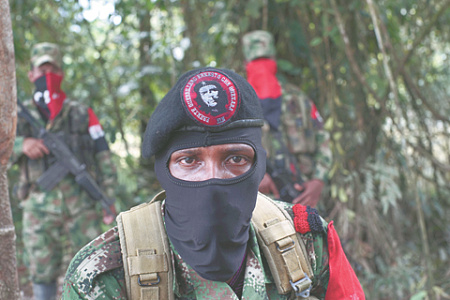
Colombia’s illegal armed groups have swelled by thousands, dealing a significant blow to President Gustavo Petro’s flagship “Total Peace” initiative. According to a government internal security report, the number of active militants has surged from approximately 15,000 to nearly 22,000 since Petro took office, a grim statistic that challenges the core promise of his administration to end the nation’s long and brutal internal conflict.
Elected in 2022, Petro, himself a former member of the M-19 guerrilla movement, vowed to achieve “Total Peace” by negotiating with the remaining armed factions and integrating them into society. This ambitious plan was initially hailed as a historic opportunity to finally resolve a civil war that has haunted Colombia for decades. However, the promise of peace is proving exceptionally difficult to fulfill.
The resurgence of these groups, deeply enmeshed in drug production and trafficking, is fueled by a combination of dire socio-economic conditions and coercion. For many Colombians in neglected regions, joining an armed faction offers an alternative to poverty. Furthermore, the groups are expanding their ranks through the aggressive recruitment and, in some cases, the outright abduction of children and teenagers, forcing them into a life of violence.
The roots of the conflict stretch back to 1964 with the formation of leftist guerrilla movements like the FARC and the ELN. While a landmark 2016 peace accord led to the demobilization of the FARC, the largest group, some dissident factions refused to lay down their arms. Critically, the deal failed to solve the underlying problems of the drug trade and state absence that allow violence to flourish, a challenge that has stumped successive governments.
Under Petro, negotiations with the largest active group, the National Liberation Army (ELN), have stalled, and ceasefires with other factions have been fraught with difficulty. The lack of progress has become so pronounced that in 2024, the government was forced to resume military operations against some of the very groups it sought to bring to the negotiating table.
Critics, particularly from the political right, now declare the “Total Peace” strategy a failure. They argue that the government’s ceasefires were ill-conceived, granting armed groups a strategic pause to rearm, consolidate territorial control, and recruit new members without facing pressure from state security forces.
However, some analysts caution against a simplistic verdict. They argue that dismantling the complex structures of a 70-year war is a generational task. A crucial and unresolved factor driving the violence is the continued assassination of social activists and demobilized ex-combatants. With the government unable to guarantee their safety, a return to armed struggle becomes a grim option for self-preservation, feeding a vicious cycle of violence and making fluctuations in militant numbers a persistent and tragic feature of Colombia’s landscape.
